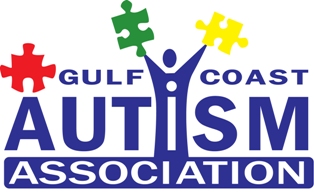What is Autism?
Autism is a complex developmental disability that
typically appears during the first three years of life. The result of a
neurological disorder that affects the functioning of the brain, autism
and its associated behaviors have been estimated to occur in as many as
1 out of every 91 children – over 1% of American kids today - according
to the Department of Health and Human Services National Survey of
Children's Health (2009).
Autism is four times more prevalent in boys than
girls and knows no racial, ethnic, or social boundaries. Family income,
lifestyle, and educational levels do not affect the chance of autism's
occurrence.
While people with autism share common
characteristics, each person is unique with his or her own strengths and
weaknesses.
Due to the impact on the normal development of the
brain, children and adults with autism typically have difficulties in
verbal and non-verbal communication, social interactions, and leisure or
play activities. The disorder makes it hard for them to communicate with
others and relate to the outside world. In some cases, aggressive and/or
self-injurious behavior may be present. Persons with autism may exhibit
repeated body movements (hand flapping, rocking), unusual responses to
people, attachments to objects and resistance to changes in routines.
Individuals may also experience sensitivities in the five senses of
sight, hearing, touch, smell, and taste.
Over 1.5 million people in the U.S. today have autism
or some form of pervasive developmental disorder. Its prevalence rate
makes autism one of the most common developmental disabilities.
Signs and
Symptoms of Autism
Individuals with Autism usually exhibit at least half of the traits listed below. These symptoms can range from mild to severe, and vary in intensity from symptom to symptom. In addition, the behavior usually occurs across many different situations and is consistently inappropriate for their age.
·
Insistence on sameness; resists change in routine
·
Severe language deficits
·
Difficulty in expressing needs. Uses gestures or
pointing instead of words
·
Echolalia (repeating words or phrases in place of
normal, responsive language)
·
Laughing, crying, or showing distress for reasons not
apparent to others
·
Prefers to be alone; aloof manner
·
Tantrums – displays extreme distress for no reason
·
Difficulty mixing in with others
·
May not want cuddling or act cuddly
·
Little or no eye contact
·
Unresponsive to normal teaching methods
·
Sustained odd play
·
Spins objects
·
Inappropriate attachment to objects
·
Apparent oversensitivity or undersensitivity to pain
·
No real fear of dangers
·
Noticeable physical overactivity or extreme
underactivity
·
Not responsive to verbal cues; acts as if deaf although
hearing tests in normal range
·
Uneven gross/fine motor skills (may not kick ball, but
can stack blocks)
How to
Diagnose Autism?
Because there are no biological markers for autism,
screening must focus on behavior. The diagnosis is made by professionals
specializing and with experience in Autism Spectrum Disorder (typically
a developmental pediatrician, a pediatric neurologist or a child
clinical psychologist). He or she takes into account the child's
complete medical and behavioral history, observation of the child's
behavior in different settings, and rules out other problems that may
present the same symptoms. Parental and other caregivers’ input and
developmental history are very important components to make an accurate
diagnosis. Medical tests may be ordered to rule out other possible
causes.
If you, as a parent, suspect that something is wrong
with your child's development, don't wait: speak to your pediatrician
about getting your child screened for autism.
Early
Identification is Critical
Research indicates that early identification is associated with dramatically better outcomes for individuals with autism. The earlier a child is diagnosed, the earlier the child can begin benefiting from one of the many specialized intervention approaches to treatment and education.
